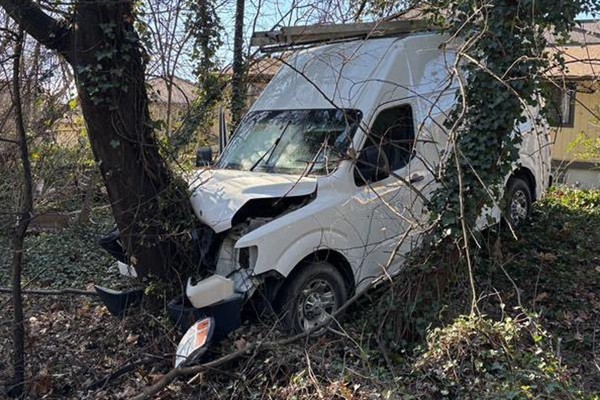They seem harmless at first—funny dances, silly dares, or simple games shared by friends online. But some of the most popular internet challenges kids are doing today carry risks that go far beyond embarrassment. From dangerous physical stunts to emotionally manipulative trends, experts are raising red flags about how these viral challenges can impact health, safety, and self-esteem. Many kids participate just to fit in or gain likes, without fully understanding the consequences. If you’re a parent, it’s crucial to stay informed about what’s trending—and why some of it could put your child in real danger.
1. The “One Chip Challenge”
This internet challenge dares participants to eat an ultra-spicy chip made with Carolina Reaper and Scorpion peppers. While it seems like a harmless food stunt, kids have ended up in the ER with extreme reactions. Nausea, vomiting, chest pain, and even temporary breathing issues have been reported. Some schools have banned the chip altogether due to its effects. Experts warn this is one of the internet challenges kids are doing that can lead to serious medical complications.
2. The “Blackout Challenge”
Also known as the “choking challenge,” this dangerous trend involves kids attempting to cut off their air supply to experience a brief high. It has led to tragic outcomes, including loss of consciousness, brain damage, and even death. Despite repeated warnings, versions of this challenge continue to surface on social media. Experts emphasize the importance of talking openly with your child about peer pressure and body autonomy. This is one of the most alarming internet challenges kids are doing today.
3. The “Benadryl Challenge”
This challenge encourages kids to take excessive doses of Benadryl to induce hallucinations. It has resulted in hospitalizations and at least one death. The misinformation surrounding it falsely promotes it as a “safe” way to experiment. Experts stress that over-the-counter drugs can be just as dangerous as illegal substances when misused. Educating your child about medication safety is essential.
4. The “Salt and Ice Challenge”
In this trend, kids pour salt on their skin and press ice cubes onto it to see who can withstand the pain the longest. The chemical reaction between salt and ice can cause second-degree burns and permanent scarring. While it may seem like a harmless dare, it promotes self-harm behavior under the guise of a game. This challenge is a clear example of how physical pain is being normalized online. Parents should watch for signs of unexplained injuries.
5. The “Outlet Challenge”
This viral challenge encourages kids to partially plug a phone charger into a wall outlet and slide a penny between the plug and the prongs. The result is a visible spark, and in some cases, electrical fires. Fire departments and schools across the country have issued warnings after property damage and serious risks of shock. Among the most reckless internet challenges kids are doing, this one can have devastating consequences. It’s a good reminder to talk about both safety and electricity hazards at home.
6. The “Orbeez Challenge”
Orbeez are tiny water-absorbing beads, and this challenge involves freezing, soaking, or launching them using toy guns. Some kids are shooting these beads at strangers or cars, causing injuries and criminal charges. What began as sensory play has turned into unsafe public stunts. Experts urge parents to monitor how toys like Orbeez are used and discuss appropriate play. When modified into a challenge, even a toy can become a threat.
7. The “Dry Scooping Challenge”
Dry scooping refers to swallowing protein or energy powder without water, supposedly to boost workout results. It has gained traction among teens trying to emulate fitness influencers. However, it can cause choking, heart palpitations, and serious gastrointestinal distress. Pediatricians say it’s especially dangerous for teens with underlying heart conditions. This trend blurs the line between fitness and risky behavior.
8. The “Skull Breaker Challenge”
This alarming challenge involves two kids tricking a third into jumping, only to kick their legs out from under them mid-air. It has caused concussions, spinal injuries, and broken bones. Doctors and teachers have spoken out against it due to the high risk of head trauma. This is one of the most dangerous internet challenges kids are doing, often shared as a prank. Make sure your child understands that some jokes cross serious lines.
9. The “Fire Challenge”
Yes, this exists. Kids are lighting themselves on fire for social media clout, often using rubbing alcohol or hand sanitizer as fuel. Severe burns and emergency room visits have resulted. Firefighters and doctors have repeatedly warned of the risks, but the trend resurfaces every few years. Remind your child that imitating stunts seen online can result in permanent harm.
10. The “Blue Whale Challenge”
This trend originated as a dark online game that assigns increasingly harmful tasks over 50 days, sometimes leading to self-harm or suicidal behavior. While its existence has been debated, it represents how internet challenges can sometimes manipulate vulnerable kids into dangerous actions. Experts recommend closely monitoring online communities, especially anonymous or invite-only groups. Even rumors of these types of games highlight the importance of mental health conversations.
11. The “Clout Chasing” Dare Challenges
Not tied to one specific stunt, clout chasing challenges involve filming risky or humiliating acts just to go viral. These could include eating strange items, harassing strangers, or performing stunts in traffic. The constant pressure to perform for likes can drive kids to extreme behavior. Experts say this category of internet challenges kids are doing is driven more by social approval than by fun. Teaching your child about healthy boundaries and self-worth is key to resisting that pressure.
Awareness is the First Line of Defense
You can’t stop every dangerous trend on the internet, but staying informed helps you protect your child. Talk regularly about what they’re seeing online, how it makes them feel, and how to recognize risky behavior masked as fun. The more open and judgment-free your conversations are, the more likely your child is to come to you first. Internet challenges may be trending, but safety and trust should always lead the way.
Have you spotted a dangerous internet challenge making the rounds? Share what you’ve seen or how you’ve handled it in the comments!
Read More:
11 Online Safety Risks Your Preschooler Faces
12 Steps to Secure Your Child’s Digital Footprint for Life
The post The Silent Threat: 11 Internet Challenges Kids Are Doing (Experts Warn) appeared first on Kids Ain't Cheap.








